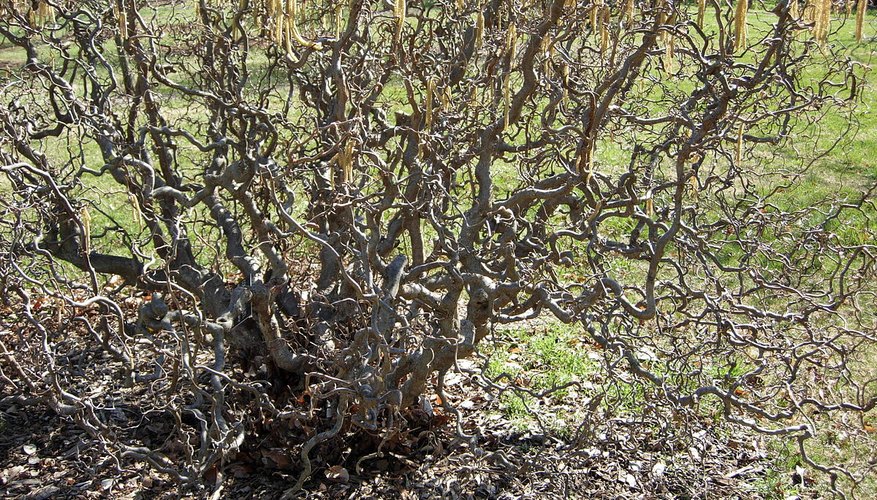The corkscrew hazel has the botanical name of Corylus avellana "Contorta" and gets its common name because the branches grow in a spiral pattern. In the spring and summer, the branches are covered in green foliage that disguises the shape. However, once autumn arrives, the leaves shed and display the spiral corkscrews throughout the winter months. Pruning a corkscrew hazel is done primarily to maintain the size and untangle some of the branches.
- The corkscrew hazel has the botanical name of Corylus avellana "Contorta" and gets its common name because the branches grow in a spiral pattern.
Wait until the early spring to prune the corkscrew hazel, after all threats of frost are over.
Look at the base of the main trunk and locate any smaller suckers that are growing out of it. Prune these suckers off using hand pruners and cutting flush with the trunk.
Cut each of the stems back to 30 cm (12 inches) above the ground using loppers, creating an even surface along the top of the hazel.
Stand back and look at the branches and identify those that are tangled in other branches or that are rubbing against other branches. Trace the tangled branches back to the main stem or the soil line and prune them off using hand pruners. Gently untangle the branch from the other stems to avoid damage and discard it.
Wait until the late spring when the corkscrew hazel has added new growth in the spring. Identify the halfway mark for each stem and cut the stems off at this location using the loppers.
TIP
Instead of discarding the cut stems, pull off all of the leaves and use the twisted branches in a vase to add interest to floral arrangements and centre pieces.
